![]() I’m sure everyone here has a beloved franchise that has produced a disappointing entry or two throughout the years. Perhaps the franchise took a turn in a different direction than you thought it should. Maybe the themes, styles, or gaming mechanics strayed so much from the originals that you found yourself alienated or less interested in the new direction they took. Or maybe they made a film adaption…
I’m sure everyone here has a beloved franchise that has produced a disappointing entry or two throughout the years. Perhaps the franchise took a turn in a different direction than you thought it should. Maybe the themes, styles, or gaming mechanics strayed so much from the originals that you found yourself alienated or less interested in the new direction they took. Or maybe they made a film adaption…
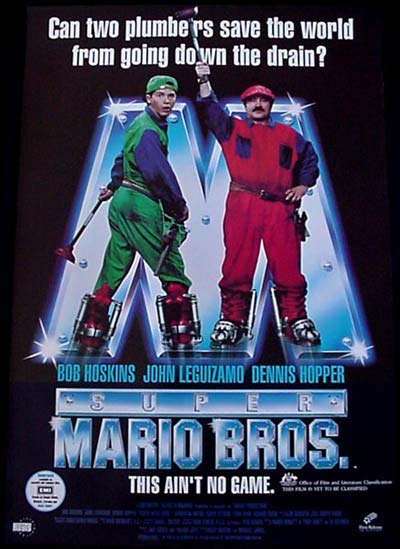 I’m really not starting this article out on the right foot, am I?
I’m really not starting this article out on the right foot, am I?
Of all the games that have endured soul-crushing reboots and film adaptions, none have caused me as much pain and damage as what they did to the Alone in the Dark franchise. The words “tragic” and “vomit-inducing” get thrown around a lot here (by me) at GameCola. But folks, believe me when I say that this series has been through the wringer.
Quiz time! What game invented the survival horror genre as we know it today?
If you said Resident Evil (or even thought it), you disgust me and shame on you. Let me put it like this: Let’s say I invented a circular device that had the numbers 1-12 on it, and had an hour, minute, and second hand, and it could tell time. While I never gave it an official name, the invention was enjoyed by many. Eventually, a company called Capcom came along and copied my design and named the copied device a “survival horror” game. Wait, that didn’t come out right. What I mean is that while the “survival horror” subgenre name was first coined by Capcom with Resident Evil, all the facets that made Resident Evil the game it was were lifted directly from Alone in the Dark.
 Pictured: polygons of awesome.
Pictured: polygons of awesome.
The Overview
What is this Alone in the Dark? Tragically, the popular and enjoyable original trilogy died, long ago. Instead of letting the series rest in peace, Infogrames exhumed the corpse and produced a decaying, putrid zombie of a franchise that may still use the arrangement of words “Alone in the Dark”, but lacks the very soul the series once possessed. A series that features zombies has ironically become a zombie itself.
However, the three original games are something special. They take place in the ’20s and revolve around Edward Carnby—supernatural private eye. The pre-rendered fixed camera angles, horror atmosphere, puzzles, and utilization of collected items all form an immersive experience that reeks of classic survival horror goodness.
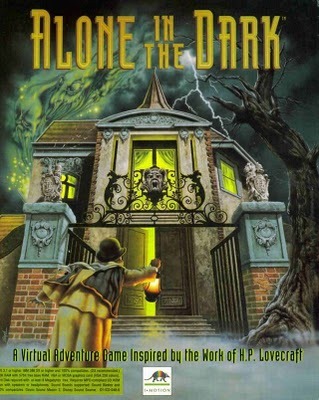 Virtual adventure game? Aren’t they all?
Virtual adventure game? Aren’t they all?
The original Alone in the Dark started as a side project of one of the Infogrames developers in 1992. The game was heavily inspired by H.P. Lovecraft and old Romero zombie films. He sought to create a game that gave a feeling of loneliness and desperation not seen in many other games at that time. It eventually became an award-winning, record-breaking masterpiece. A strong focus was put on physiological horror, twisted storytelling, and puzzle solving within a horrific mansion. Mindless zombies are the most common enemy.
 You’re nothing, Jack Sparrow!
You’re nothing, Jack Sparrow!
The sequel was fantastically orchestrated, considering the production nightmare the company endured. The main developer left Infogrames and took half the production team with him. Fortunately, the game was still made, and made pretty well. The premise of the established Lovecraftian AitD universe does slightly waver in a few ways with this game. First, the main villains are living gangsters possessed by the ghosts of evil pirates instead of mindless zombies. Secondly, while the game has plenty of atmospheric awesomeness and skull-thumbing puzzles, there is a much higher focus on action instead of physiological suspense. This game saw the most exposure of the entire trilogy. Alone in the Dark 2, or One-eyed Jack’s Revenge, was not just released on PC: it later was enjoyed on 3DO and PlayStation, as well.
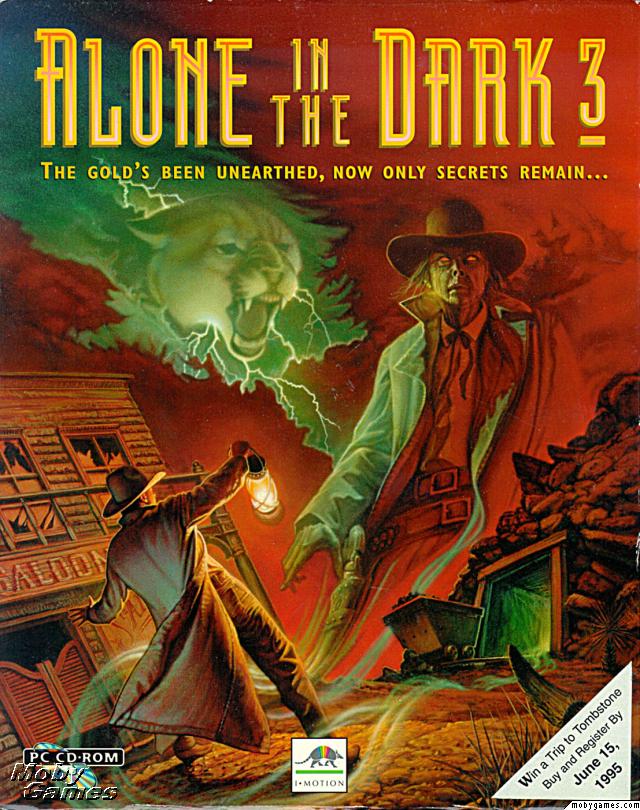
…I never did win that trip to Tombstone.
Alone in the Dark 3 returns to the roots of the original by having has far less combat than even the first AitD. The focus is primarily on fucking the mind out of the player, who is trapped in an abandoned ghost town with evil zombie gunslingers. The puzzles are, again, a triumph.
So just to review here: Lovecraftian monsters, ghost pirates, and gunslinger zombies. Please make a mental note of the “awesome-as-fuckness”.
The more recent Alone in the Dark outings—the games and movies most known by this generation—are not even in the same universe as the series that time forgot. I mean that figuratively and literally. From Alone in the Dark: The New Nightmare onward, the premise, mechanics, atmosphere, and even protagonist that were once unique and noteworthy have been annihilated and replaced with pure fuck.
“But, Frank! The newer games aren’t that bad,” one may foolishly say. Well first, eat a dick. Second, I don’t care if they aren’t terrible. I don’t even care if the games are above average. The point is that they are NOT Alone in the Dark games. Period. The degradation of the genre has made me ashamed to be a fan of the franchise. But the originals DID exist. And they WERE good. So the only logical thing to do is to find out what the originals did right, and why it all went to the toilet. Or maybe I should start at the toilet and work my way backward—like a Memento-style Taco Bell night. No, the best place to start is after the original series ended.
They say that imitation is the sincerest form of flattery. After the original Alone in the Dark series came and went, Resident Evil was released. At the time, it was a clear homage/imitation (homagitation?) of AitD. Some of the differences in premise include the time period and the biological approach to the antagonists. The monsters had a foundation in realism with a virus being the cause, instead of magic. I found that premise much less titillating for me. Part of AitD‘s appeal was the supernatural angle. But I digress…
Clearly, it started to go to hell in a hand basket when Alone in the Dark: The New Nightmare was released. I admit the game itself was not too bad. In fact, it had some suspenseful moments. And compared to the original trilogy, the graphics are great. Also, for a game with the word “dark” in the title, the lighting effects were pretty damn incredible. The game takes place in present time on an island with a mansion. Instead of zombies, the baddies look like monsters of some kind. Although Carnby is still the main character, he’s not the same person as the ’20s counterpart. How could he be? The original series’ Carnby is a redhead with a killer mustache. Nightmare‘s Carnby is an emo with long, straggly hair and NO ‘stache! And again, this game takes place in modern times. The game explains the different Carnbys by saying he is simply an ancestor. How fucking convenient.
The game marked a strong departure from the originals—a very Resident Evil-esque departure. The New Nightmare plays like a Resident Evil clone! That’s right. The company originally responsible for leading the cavalry into the brave new age of survival horror chose to imitate the games that had originally imitated the original trilogy. The outcome was a serviceable experience with no depth or soul. The character was completely wrong, the time period was wrong, and the villains were wrong. They left out everything that had made the Alone in the Dark series unique.
The developers missed the point of their own series.
What followed was the movie.
 How many 10s of dollars did they have to pay you, Slater?
How many 10s of dollars did they have to pay you, Slater?
I’m not going to go into much detail about this one, because 1) it has even less to do with the series, and 2) I’m tired of wiping the tears and vomit off my qwerty. Suffice it to say, it’s a miserable piece of shit. This marked the second time the Alone in the Dark series set a Guinness record. This time it was because it was the lowest grossing videogame-adapted film of all time. So put that feather in your cap.
Another videogame was released in 2008 simply called Alone in the Dark. This game tried to again redefine itself as a genre. The game still takes place in the modern day, only this time they ignore The New Nightmare. Now Edward Carnby is supposed to be the same Carnby from the original trilogy again. Huh? They explain that he was sent through time… Sent. Through. Time. Say it out loud. FUCK.
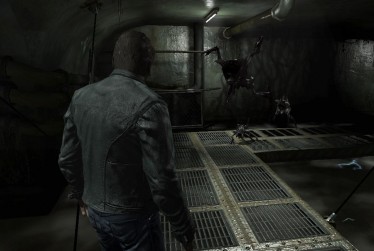
Although I never actually played this one, the product seems to be a confusing mess that looks, this time, like a Resident Evil 4 clone with FPS influence. The reviews seemed to agree. It was obvious to me by this point that the departure from the series I knew was complete. The big wigs were simply using the name and nothing more. This was not really Alone in the Dark.
It was…wait for it…
A clone in the dark.
Thank you.
Finally, after my inner child was beaten and abused by these games and movies, one final movie was released to finish him off. Alone in the Dark 2. More like Alone in the Fart, Poo, this direct-to-DVD (or direct-to-Netflix instantly) abortion strayed so far from the originals series that it hit Asia…

Literally… They cast Edward Carnby—the awesomely mustached ginger from the 1920s—as a modern-day ASIAN MAN!! Look, it’s acceptable—perhaps even admirable—to change up the main character of a popular series that’s been done to death, but at least give the original an honest chance! If you want to change the main character, why not just come up with a new name, then? Or just, you know…make a different movie. I don’t even remember the reason why they made this casting decision. I’m pretty sure I genuinely blocked it out.
So when I say “wringer”…yeah, this series has been through it.
All that to say, the original series deserves a fresh look. The only way this article is going to work is for the reader to use a little imagination. Please remember that these games are now officially dated and have been copied several times over the years. The polygon sprites are laughable, and the prefabbed scenery is cartoonish. The game was made 20 years ago. However, quite a bit maintains a unique edge. For one thing, the storyline still feels fresh and eerie. And why shouldn’t it? It is, after all, based on the works of THE one and only H.P. Lovecraft. Besides, I have a theory about videogames like these with inferior graphics: they utilize more of the player’s imagination. Sure, the visuals may no longer be a viable vehicle for the player to rely on to feel certain emotions, but the creativity can still take over and create the experience. The better the graphics, the more clearly the developer’s vision can be seen. Less of the player’s own imagination is needed.
The Review
I had the entire trilogy. It was lost long ago when I moved out of my parents’ house. In order to get it back, I had to make a voyage back to the haunted house. The only way that was going to happen was with my trusty lantern.
As I enter the dwelling, the door slams shut behind me. Are my parents home, or am I…alone in the dark?…
I slowly make my way up the stairs. I see the door leading up to the attic: the last known whereabouts of the missing games.
With terror at every corner and my paranoia growing, I grip the knob and turn it. The door creaks open.
I slowly make my ascent into the forgotten halls of my mysterious yesteryear, each stair creaking in protest at the weight of my determined step…
All at once I hear the light playing of a piano…
 On the mantle, you find a key.
On the mantle, you find a key.
In the most forbidden reaches of the attic rests the forlorn cabinet…
Using the key from my inventory, the cabinet opens with ease…
Inside the cabinet, I find old toys and other antiques. Among them, I spot the Alone in the Dark trilogy on the second shelf.
I make my way out of the house with caution, careful not to disturb the guardians of the keep.
The end.
That is exactly how it happened. Don’t question it.
I was able to play the games on my laptop using DOSBox.
Alone in the Dark
https://youtube.com/watch?v=Ph-evY0mnQ0
Edward Carnby is totally Rob Swanson from Parks and Recreation.

“Please refrain from discussing feelings in the vicinity of meat.”
The story revolves around a haunted mansion where Jeremy Hartwood committed suicide. The player can choose who they want to play as at this point. The back stories are both simple and interesting. Poor Edward Carnby is a private detective who’s just in the house to look at a piano for an antique dealer. That’s some shitty luck. The other character—Emily Hartwood, Jeremy’s niece—is also interested in the same piano. Only, she believes there is a secret compartment in the piano with a suicide note. She already knows the mansion is haunted as shit. She even knows about a few secrets passages and ghastly encounters before she even gets there. She is way more qualified to embark on this adventure than Carnby.
Come to think about it, Carnby not only has no idea what is going on with the house, but he doesn’t even have any skills with ghosts, antiques, combat, the occult, or even pianos for that matter. What exactly is he doing there? Worst hero ever. Both characters begin the game in the attic of the mansion as ill-equipped amateurs. One has an awesome mustache, but no training or briefing. Emily has all the knowledge, but is a just woman.
Wait, “just a woman”? Hey, this was made 20 years ago, back when women were either damsels in distress in games, or perceived as nothing more than sandwich-makers for the real heroes, right?
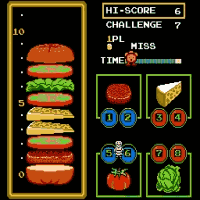 You probably think this is the only game women played back then, sexist pig.
You probably think this is the only game women played back then, sexist pig.
I mean, the idea of a “twist ending” for gamers back then was to find out that you were actually playing as a woman all along (Metroid, anyone?). I could write an entire article about how sexist games were back then. Don’t worry, I won’t. All joking aside, Alone in the Dark was a breath of fresh air by having a woman protagonist.
Of course, the truth of the matter is that recently, female gamers have had a renaissance of sorts. I am happy to report that gaming girls are totally cool now. And of course, women have been playing these games all along by our sides. I give them credit for enjoying the classic games that were male-centered as much as us, in secret. Thankfully, woman heroes are even now fully embraced by our society. Even if many are only sex objects.
Anyway, back to the mansion. Regardless of the hero you choose, it does not go well for the player. There are plenty of ghouls, ghosts, and other Lovecraft-inspired monsters that lurk in the big house. The plot is a well-packaged experience that delivers on some surprising levels. The setting is eerie and atmospheric. The puzzles are superb.
Playing through the game again really helped paint me a fresh view of what this game really set out to accomplish.
 How were they planning on getting the piano out?
How were they planning on getting the piano out?
There is a lot of trial and error (and I mean a lot). Prepare to be mercilessly killed by random collapsing hallways, killer statues, and other assorted furniture and traps. There are some situations that will inexplicably kill the player. One may find oneself asking, “Hmm, I wonder if this will kill me.”
That being said, navigating many of the obstacles and challenges effectively the first time around is not out of the question. It is possible to guess correctly in the life-and-death situations.
The formula plays out exactly how you would expect. Collect items, solve puzzles, avoid obstacles, and kill everyone that isn’t you.
The weapons are essential. While not every enemy can be killed, melee and projectile weapons help the player destroy the ones that can. Finding weapons is invigorating for several reasons. First, the player never knows when they will find one. Second, it is fun to use them. The amount of detail seen here is admirable. The developers really used every opportunity to keep the suspense strong in AitD. The guns sometimes jam and the swords sometimes break. While being balls-deep in a tough battle and having my sword snap in two is not my idea of a good time, it keeps things interesting.
The game’s awesomeness doesn’t make it impervious to imperfection, though. Being made so long ago, there has to be a few issues with the series, right? Oh, yeah. There are plenty of glitches.
One of the glaring flaws that plague the entire series is the aiming system. There isn’t one. The player must use the provided perspective to determine where to shoot, punch, or stab. This is a constant problem, especially with shooting. While engaging an enemy with a firearm, the player must shoot, see where the bullet hit, adjust, and shoot again. This takes a huge toll on the already scarce ammo. This is where the saving system needs to be utilized. I found myself saving as soon as I encountered every enemy. If I felt like I used too much ammo, I loaded a previous saved state and tried again.
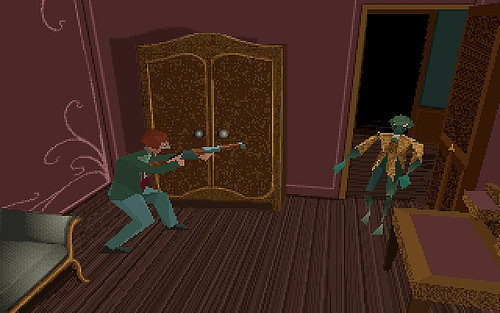 I’m actually aimed at the sofa.
I’m actually aimed at the sofa.
Also, the “battles” pretty much suck. Some are ridiculously difficult because of the aforementioned angle and aiming issues and sluggish controls. Other battles are absurdly easy to the point of lunacy. If you engage an enemy, sometimes the angle is just right for the player to be able to hit the enemy without them being able to hit back. The experience is inconsistent. I know it sounds like a big deal, but it’s really not. Besides, in a game like this, forgiveness is paramount. So show some respect, you whippersnappers.
Collecting items in the first Alone in the Dark also feels a bit rough around the edges by today’s standards. Sometimes, items can be missed or misused in this game. This can lead to dead-ends at later parts of the game. If the player forgets or drops an item, sometimes it’s impossible to go back. The glitch hearkens back to Stonekeep and the orbs the player needed to collect. The remedy? Trial, error, and saving the shit out of the game. Also, some of the uses for the items are questionable and not very easy to figure out.
The sound effects are average at best. I found them to be tedious and reused a lot. They could have benefited with a few more gunshots, sword clangs, and walking sounds to add variation to the actions of the game. It can dampen the psychological aspect of the game when a villain says the same gurgled “uuuggggggg” over and over while attacking you. That being said, the music of all three games is epic.
One more thing. About the werewolves or whatever they are… They…
Yeah…
Despite the archaic nuances and glitchy annoyances, the game is a masterpiece. Alone in the Dark started it all.
The thing about the sequels is that they are very similar to the original. The graphics and mechanics are identical. Thus, the other games can be summed up in only a few paragraphs.
Alone in the Dark 2
https://youtube.com/watch?v=WWqLR7XinrU
Not quite as riveting. But with 100% more clown horror.
Alone in the Dark 2 is a search-and-rescue mission. Instead of appraising a piano, Carnby is rescuing a little girl from an evil pirate named One-eyed Jack. The game is much larger than the original. Not only is there a vast mansion, but now the player has to navigate an extensive property, cave system, and a pirate ship.
As mentioned, there is a lot of action in this game. The player will have more battles in the first 10 minutes of gameplay than the entire first game offered. It’s not a bad thing, it just leaves a bit less for the imagination. Also, the bad guys are smarter, Tommy-gun wielding gangsters possessed by the ghosts of pirates.
While I was playing through the game, something kept bothering me though. The enemies. They are just possessed people. They aren’t super evil zombies, ghosts, or even horribly polygon-ed werewolves. So all that killing that Carnby’s been doing? Yeah, that’s actual murder. And a lot of it. So now the player can have a difficult time aiming and shooting at targets that deserve it even less.
An ongoing issue with the series that is especially noticeable in AitD2 is how easy it is to differentiate between the prefabbed backgrounds and the interactive objects within them. The polygons of an interactive object can be spotted a mile away. This makes puzzle solving easier than might have originally been intended.
Without giving too much away, the game is an enjoyable “sequel” that earns the right to be called one. The puzzles are enjoyable and rewarding. Also, despite not being able to pick a player, having Carnby as the lead is awesome. Although in this game, he has no mustache. *gasp*
But, all is not lost! Not only does Edward Carnby get to dress as Santa Claus for part of this game, but toward the end, the player assumes the role of Grace Saunders. Playing as the little girl is actually pretty funny. Plus, when else can someone pretend to be a little girl? Don’t answer that.
 Grace’s alternate name was Poly…gon.
Grace’s alternate name was Poly…gon.
Speaking of Grace Saunders, the developers released a mini game called Jack in the Dark as a promotion for the release of Alone in the Dark 2. In this fun little romp, the player must save Santa from evil toys in a toyshop.
In all, despite the slight change of direction, lack of mustache, and needlessly murdered henchmen, Alone in the Dark 2 delivers.
The third and final installment of the original trilogy pits a re-mustached Edward Carnby against a town of zombified gunslingers.
Alone in the Dark 3
This game pulls out all the stops. Yes, the graphics were tired and outdated when the game was released. Yes, the game was not as successful as the previous installments. But does that mean the game was inferior?
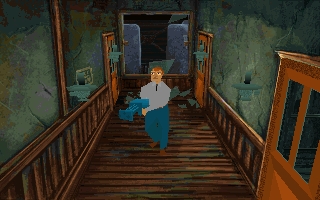
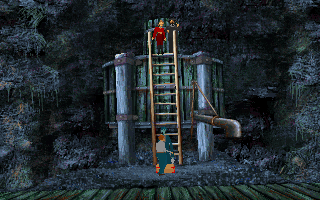
Hell to the no. The game kicks ass. Hard.
The setting this time around is a ghost town called “Slaughter Gulch”. What is the purpose for Carnby’s visit to such a charming vacation spot? Well, remember how I mentioned that is was a breath of fresh air to see a woman as a playable character in such a “damsel in distress” era of gaming?
Well, the same Emily Hartwood from the first game managed to get kidnapped by the antagonist of the game, Jed Stone, in AitD3. So forget about all that progress shit. Another fucking princess in another fucking castle. Or, ghost town.
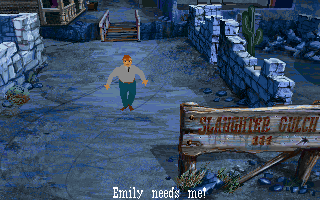
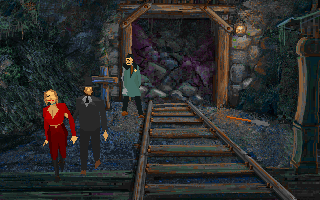
The Western town offers a perfect atmosphere for this type of game. With a saloon, bank, jail, general store, train station, and other buildings of the Eastwoodian persuasion, there is plenty to explore. The mechanics play similar to the first two games, including the glitches. The aiming issue is as prominent as ever. Only this time, since there is less combat, there are fewer obnoxious moments to be had.
One of the more disturbing aspects of all three games is the Game Over screens. In every game, after our hero’s death, a villain can be seen dragging his lifeless body accompanied with sad music. In the first game, the player’s corpse is dragged to the sacrificial slab; in the second, Carnby’s body is dragged and thrown off a cliff.
In Alone in the Dark 3, the body is hung, feet first, by the saloon. The entire evil gang of antagonists is standing around, watching your swaying corpse as the music plays. They walk away one by one to show that your decaying meat sack no longer entertains them. A simple “game over” would have sufficed, guys.
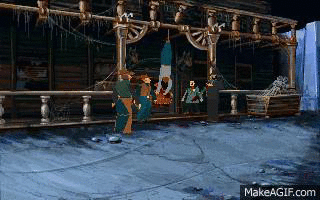 Just watch—this is your punishment for losing.
Just watch—this is your punishment for losing.
The game is the most polished out of the three. Since there are fewer enemies, there seemed to be a lot more attention to detail and care put into the other aspects of the game. The objects and puzzle utilization are top-notch.
Alone in the Dark 3 puts poor Carnby though quite a lot more than the other games ever did. In this game, Edward Carnby is, at one point, shrunk down to only a few inches for a portion of the game. Later on in the game, he even dies, only to be reborn as a cougar. And not the kind that slips roofies into my drinks at the library.
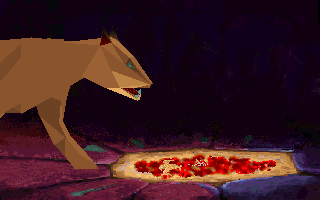

After it’s all said and done, the game achieves the strong finish it was striving for. It closed the Alone in the Dark trilogy with an airtight seal that, in a way, makes it easier to ignore the newer games. It’s how they would like to be remembered, like euthanizing an elder person before they get too senile.
In closing, there are three major things missing from the new Alone in the Dark games.
- The setting needs to be in the 1920s.
- A supernatural evil force needs to be the culprit. Leave the viruses to Dr. Mario (burn).
- Edward Carnby needs to have a mustache or at least a Santa outfit.
The trilogy is very fun and totally worth a look, especially if you didn’t know much about the series before now. The product is an entertaining and surprisingly playable joyride that holds up, on certain levels, even by today’s standards.
The Golden Age of survival horror as we knew it has long passed, and the fixed camera angles that were necessary due to graphical limitations are no longer needed. With the Resident Evils and Silent Hills constantly changing the formula of what exactly constitutes survival horror, the genre is hardly recognizable anymore. Is this a good thing? One can only speculate. Relics like Alone in the Dark serve as a “virtual adventure” of the past.
https://youtube.com/watch?v=aeHFa8XafgU
The making of the third game…in French.

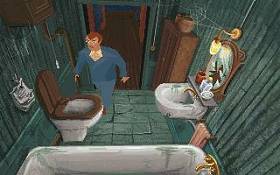
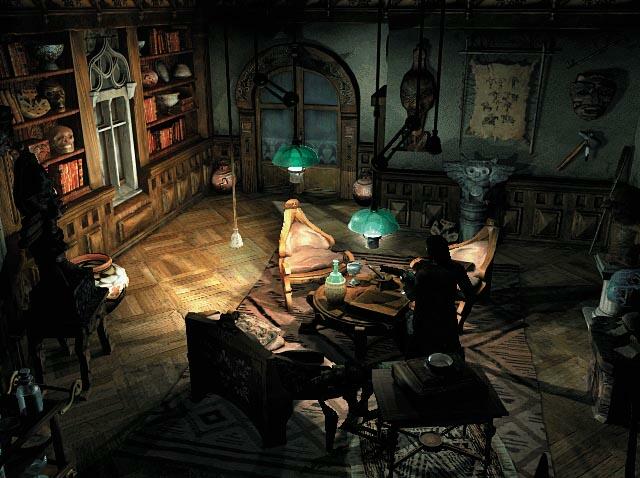
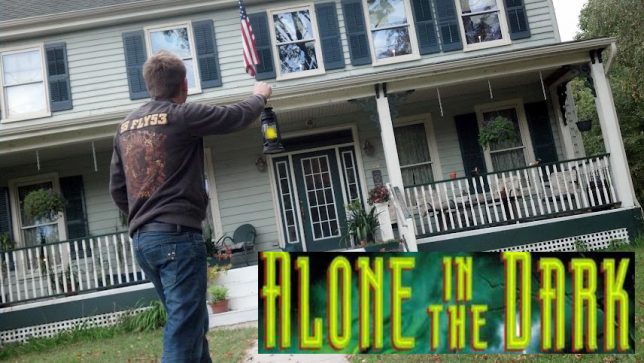


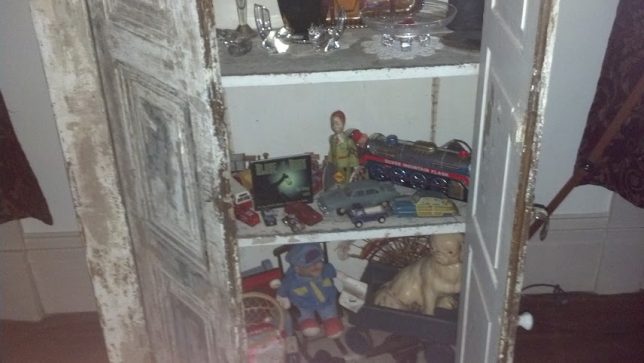
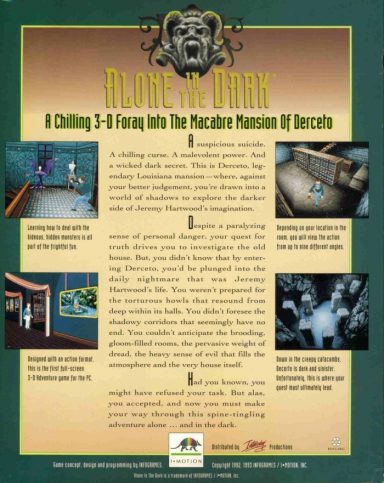

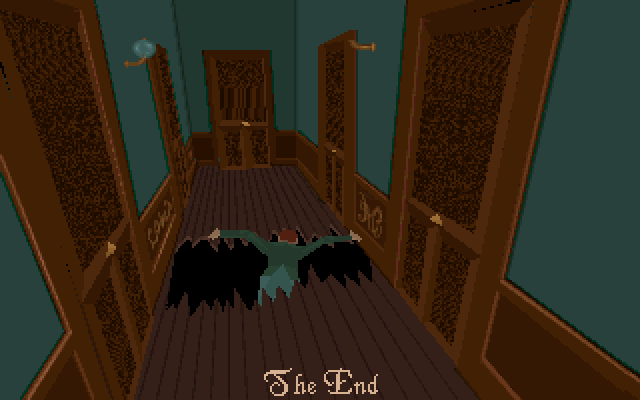
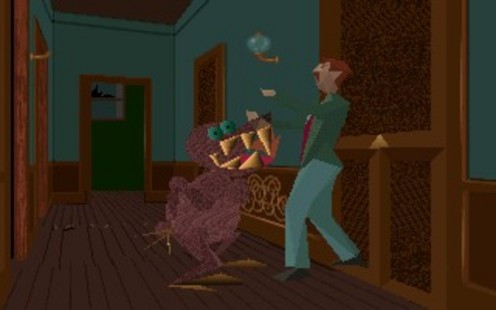
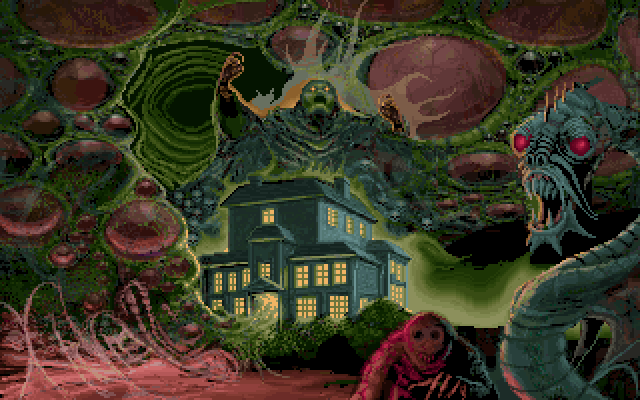
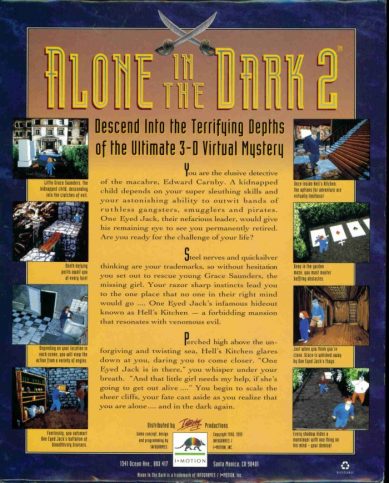
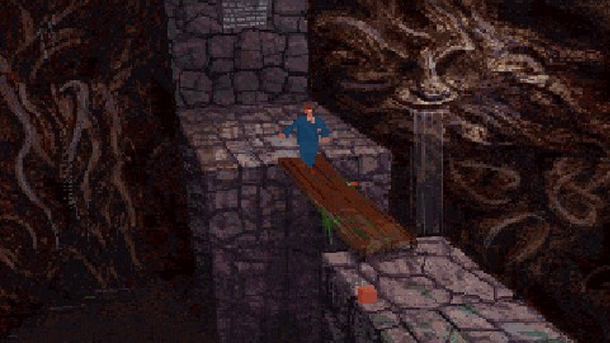


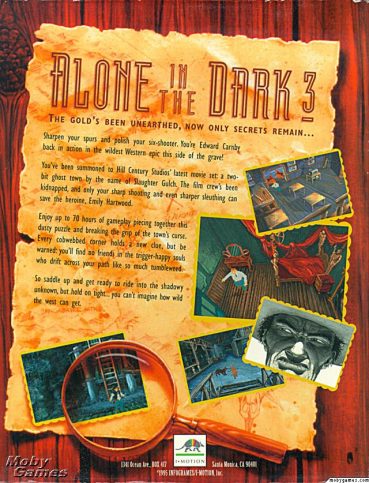
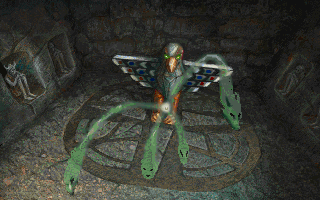
The first few paragraphs reminded me so much of my own writing style when I first joined GameCola. Spooky!
Interesting read–I’ve been aware of the first game and the movie, but I never knew much about the series as a whole.
Thanks for the comment! Yea the Alone in the Dark series just… needs to die.